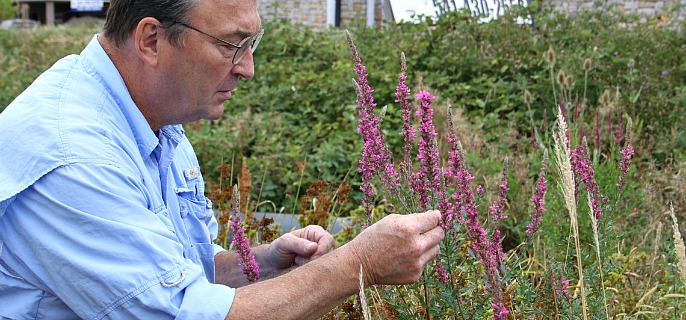
PHOTO COURTESY OF ODA
Gov. Kate Brown has proclaimed May 15-21 as Oregon Invasive Weed Awareness Week, underscoring the importance of the state’s long battle with noxious weeds.
The seven-day observance provides another opportunity to educate Oregonians about the value of invasive weed detection and the need to support control efforts that protect the state’s natural resources and economy.
“Noxious weed control programs at the state and county level are important investments in successfully holding these invasive plants at bay in Oregon,” says Katy Coba, director of the Oregon Department of Agriculture. “It truly takes a team effort, especially given the negative impact invasive noxious weeds have throughout our state and the potential for much greater harm.”
The governor’s proclamation states “Oregon farmers, ranchers, conservation groups, and public and private entities unanimously support implementation of integrated weed management projects to protect Oregon’s natural resources and economy.” The proclamation also cites an economic impact study showing that 25 of Oregon’s most significant invasive weeds cause an estimated annual loss of about $83.5 million to the state’s economy– a figure that could be well over a billion dollars without control efforts by state, county, and federal weed programs.
This is the 12th consecutive year Oregon’s governor has issued a weed awareness week proclamation. The annual designation seems to be moving the needle.
“Overall, the public is getting more tuned in to the issue and has a better understanding of invasive species issues as a whole,” says Tim Butler, manager of ODA’s Noxious Weed Control Program. “But our efforts are not just one week long. We are involved with education and outreach, as well as weed control efforts, 12 months a year.”
Invasive weeds reduce biodiversity and displace native plant and wildlife species. They invade agricultural land, forests, and other natural areas causing severe production losses, increased control costs, and negative impacts to watersheds and ecosystems.
“All the regions of Oregon – from the coast to the Idaho border and all points in between – have invasive noxious weed issues they are trying to deal with through many partnerships,” says Butler.
ODA’s Noxious Weed Control Program evolved out of statewide efforts in the mid 1970s to deal with tansy ragwort, a toxic weed that was taking over many pastures and poisoning horses and cattle. Livestock owners collectively faced $4.2 million a year in livestock losses because of tansy. That’s when the Oregon Legislature allocated funds to deal with the problem. Through pioneering biological control work – using insects that were natural enemies of tansy ragwort – the “scourge of the seventies” was eventually brought under control.
ODA has what is considered the nation’s top biological control program for weed control. To date, ODA has used 77 biocontrol agents against 31 weed species. About one out of every three has proven successful. In addition to seeing positive results with tansy ragwort, more recent success has been recorded with good bugs battling purple loosestrife, Dalmatian toadflax, and diffuse knapweed.
In a broad sense, ODA practices the concept of “early detection, rapid response” when it comes to invasive noxious weeds.
“At the state level, we try to focus on the highest priority targets, our A-listed weeds,” says Butler. “We first try to prevent new introductions of invasive weeds coming into Oregon or keep those already here from moving into new areas where they might impact our natural resources. We try to control noxious weeds when they are in very small numbers. It makes both ecological and economic sense.”
The same economic impact study that places a price tag on damage done by noxious weeds also shows a 34 to 1 benefit-to-cost ratio when emerging infestations are dealt with rapidly. That means for every dollar spent, the efforts save $34 down the line.
County weed control programs are critical in dealing with regionally abundant noxious weeds and effectively work in concert with state and local land managers. However, only 24 of Oregon’s 36 counties – including Umatilla County – have weed control programs, and some are not funded at a very high level.
“I look at it as a ‘pay me now or pay me later’ type situation,” says Butler. “If you look at it from an investment side of things, having these weed control programs in place and making sure they have the tools and resources to deal with the problems makes a huge difference.”








